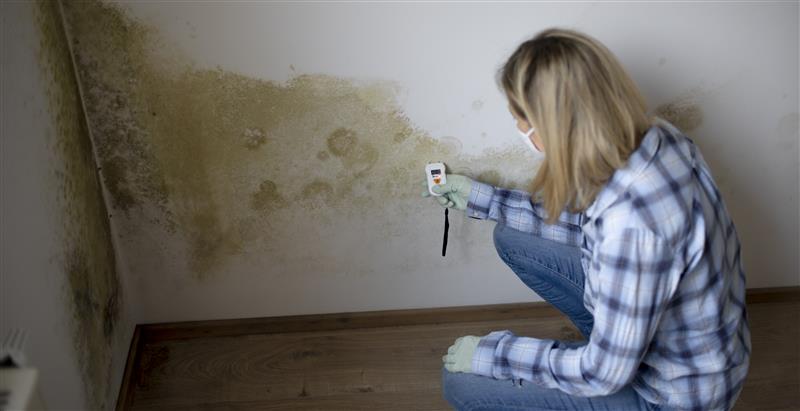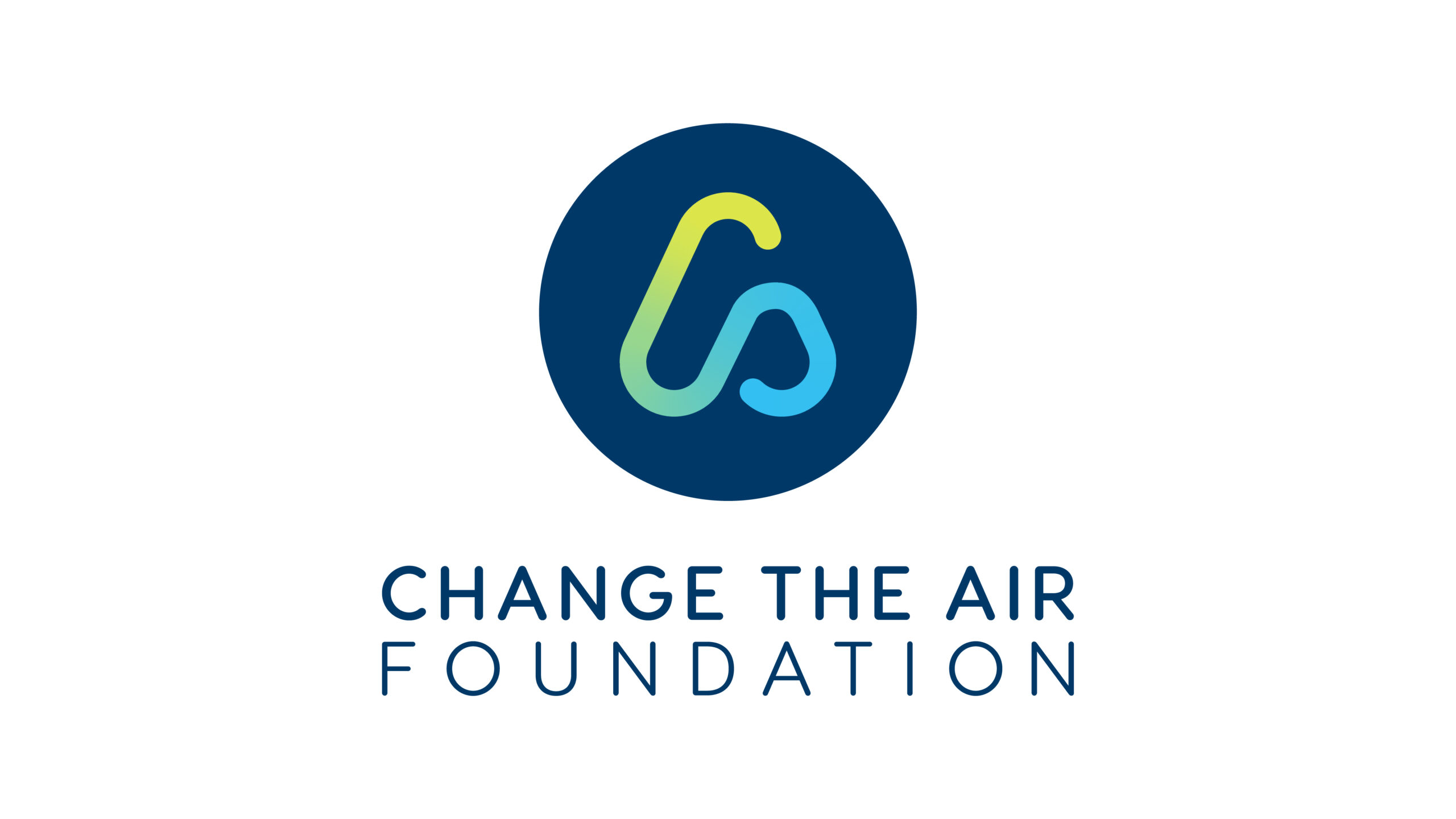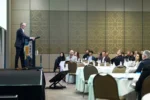
After mould-related illness turned Brandon Chappo’s life upside down, he co-founded Change the Air Foundation to do provide a voice for the millions of others affected.
Ecolibrium: Could you tell us a bit about your own experience of illness caused by mould?
Brandon Chappo: I began experiencing troubling symptoms in August 2019, despite previously being in good health. Persistent headaches, dizziness, severe fatigue, insomnia, brain fog, confusion, memory loss, and difficulty learning emerged, which was alarming given my career in aviation safety.
By spring 2020, I had seen over 15 specialists, searching for relief from chronic headaches and fatigue. Months earlier before the onset of my symptoms, I had moved into a renovated home in Cleveland, Ohio, where dampness and standing water in the basement raised suspicions of mould exposure, which was prompted by my mould-literature physician at the world-renowned Cleveland Clinic. Environmental testing confirmed high levels of toxic mould species in the home.
With guidance from my physician and targeted treatment to detoxify and reduce the chronic inflammation, my health began to slowly improve. This experience profoundly changed my life, driving my passion to advocate for awareness and prevention of this overlooked public health epidemic.
Who are the people most likely to be affected by poor IAQ caused by factors such as mould and damp?
Anyone can be affected by poor IAQ caused by damp and mould. Why? Because mould needs only moisture (from leaks, high humidity, weather events, etc.) and a food source (e.g. drywall) to begin growing within 48 hours of the right conditions for growth. We literally build our homes out of food for mould! In fact, at least50% of homes in North America are affected by dampness and mould – one in every two homes. The scale is incredibly alarming.
That said, families living below the poverty line are more than twice as likely to have mould in their homes. But again, mould and damp do not discriminate based solely on socioeconomic status – that’s important to note.
Every physician who is treating people with various health complaints should be asking each of their patients the question: “How’s your air?”.
How might living in mouldy conditions affect people’s lives beyond just physical health issues?
People living in mould are often harmed beyond just physical health issues. Financially, this experience can often cripple an individual or a family given the costs for treatment, diagnosis, inspections, remediations, cleaning and the replacement of items. The fact that homeowner’s insurance often does not cover the costs associated with mould here in the United States means that the burden is placed on the shoulders of the people being harmed.
Additionally, because of a lack of certification and licensure requirements in most states or at the federal level, or for a standard of care to be followed for the inspections or remediation work being done, our community members are often on their second or third inspector or remediator to get the job done safely and properly. The costs can become insurmountable in these situations.


On top of the physical and financial harm is the emotional and psychological toll that this experience takes on a person or family. They’re often misdiagnosed for months, if not years, being referred to multiple physicians and specialties and given prescription medications to mask the wide-ranging symptoms.
They’re often gaslighted or not believed by their partners, family members, friends and colleagues and told things like, “but you look fine”, when deep down they’ve never felt worse in their life and intuitively know something is terribly wrong.
“Many relationships have ended due to mould and water damage.”
Brandon Chappo from Change the Air Foundation
That’s because of the strain it puts on the people within the partnership, which for the person suffering can be another devastating emotional blow while they try to navigate their faltering health.
It’s no wonder that a Brown University public health study found that occupants of homes with mould and water damage were up to 44% more likely to suffer from depression.
Have there been any moves to address this problem through regulation in the US? What kind of regulatory changes would you like to see?
Currently, there are no EPA regulations or standards for airborne mould contaminants per the US Environmental Protection Agency (EPA). In fact, very little has been done to address this widespread epidemic in the US when it comes to public health education and awareness programs, certification and licensure requirements for mould inspectors and remediators and research funding trying to understand the full scope of harm that mould poses to people.
In fact, there are only seven states in the country that require certification or licensure for the people inspecting or fixing a home from mould. In other words, in 43 states it’s like the wild west.


Change the Air Foundation is fighting hard to remedy this, though. We would love to see all states requiring active-third party certifications for mould inspectors and remediators and proof of financial liability, while also following an accredited industry standard of care.
Additionally, we are pushing hard for indoor mould programs and public health and awareness campaigns, so people are educated as to the potential health ramifications from mould, water damage and microbial growth in their living environments. After all, this is a serious public health issue and needs to be viewed and treated as such. Knowledge is power.
Additionally, a thorough review of our building practices and how we are treating our building materials during building development is incredibly important as well. We’ve heard countless stories of brand new homes or rentals being built that had wet or mouldy materials being assembled without being properly dried or treated and throwing drywall into the mix. We’re cutting ourselves off at the knees from the start when we do this, and it needs to change.
Lastly, there needs to be a concerted effort amongst our public health agencies and academic researchers to conduct the research to understand the full scope of health ramifications from mould and microbial growth in water-damaged buildings.
While we understand the aspects involving asthma, allergies and respiratory issues, many people are experiencing neurological, immunosuppression, gastrointestinal and various other complaints in these homes and buildings – myself included. It’s not acceptable to continue hearing “more research is needed”, which has been the response for decades. The research needs to happen now. People’s lives are being destroyed by this issue.
“We can change the lives of countless people if we finally have the courage and commitment to tackle this widespread problem head-on.”
Brandon Chappo from Change the Air Foundation
Could you tell us a bit about the work Change the Air Foundation is doing in this space?
Change the Air Foundation was formed by a group of passionate indoor air quality advocates and professionals to help families across the United States (and beyond) breathe safe indoor air and live in healthier homes.
Early on, we realised we could make the biggest impact if we worked from a bottom-up and top-down strategy by focusing on empowering our community through our scientific-based education and resources (all for free through our website), supporting small-scale research (MoldIQ study), and through our policy reform initiative to help change the laws at the state and federal level.
We’ve been thrilled so far to have helped get eight state bills proposed, one state bill passed into law, and one federal bill proposed so far in our two-and-a-half years in the nonprofit space. There’s so much work left to do.
Though we are a smaller organisation, we make up for our size through our passion and commitment to making a long-lasting impact for all. We welcome anyone who feels moved by the same cause to join in the effort as well.
Making real change
To learn more about Change the Air Foundation and its initiatives in the USA, click here.

This article appears in Ecolibrium’s Winter 2025 edition
View the archive of previous editions
Latest edition
See everything from the latest edition of Ecolibrium, AIRAH’s official journal.





